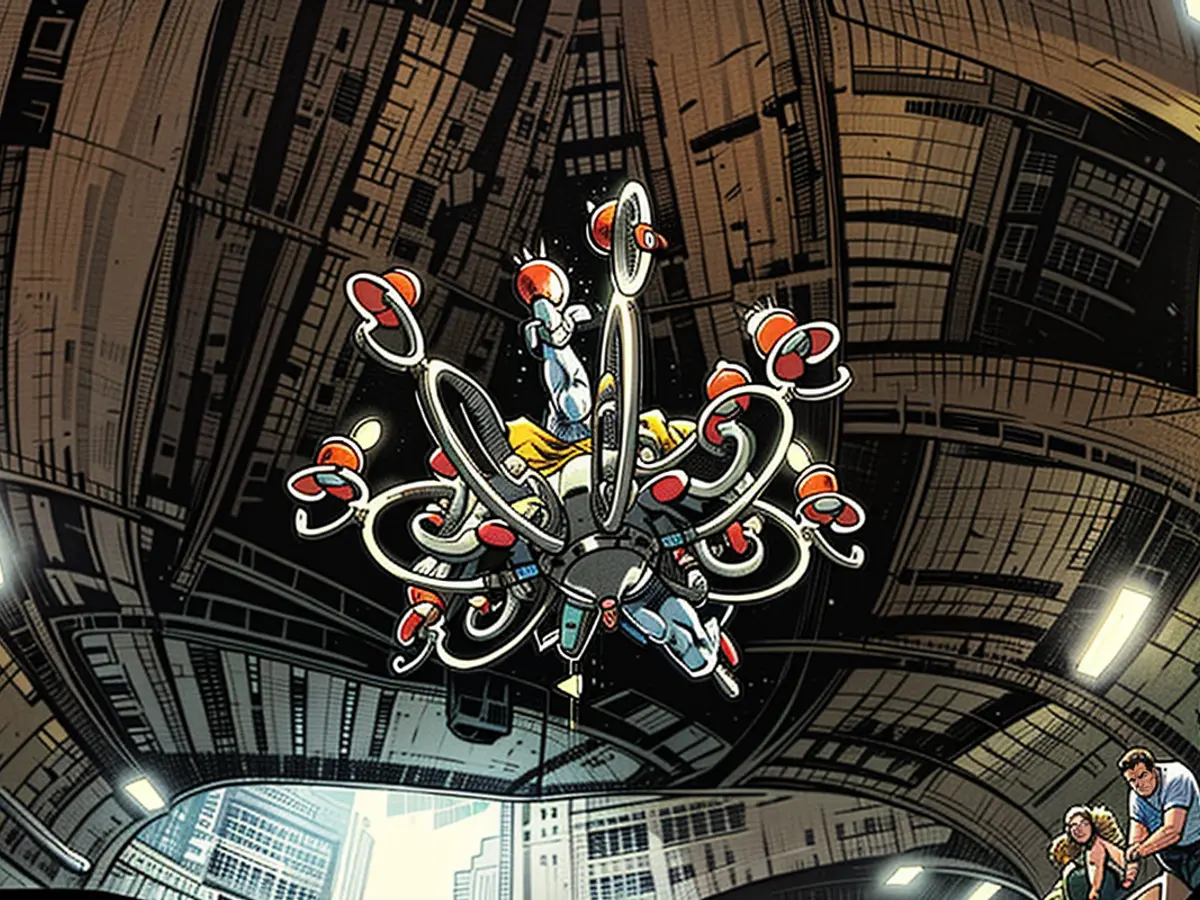A chandelier's unexpected journey to Cologne's sewer system.
Many people visualize chandeliers with images of grand ballrooms and opulent castles. However, in the heart of Cologne, one needs to venture deep into the sewers to stumble upon a spectacle of this kind. Descending into the sewers at a specific point transforms this everyday underground landscape into a fantastical realm: A vault emerges, resembling a Gothic chapel. A coat of arms embellishes the wall, and hanging from the ceiling is a chandelier. This chandelier carries a unique allure, awaiting a distinctive guest - Emperor Wilhelm II.
The breathtaking underground structure attracts countless curious tourists. It has already been pre-booked for this year. An inscription etched onto the wall from that era testifies to its completion in 1890. The reasons behind its elaborate construction remain shrouded in mystery.
The engineers behind Cologne's sewage system undoubtedly took pride in their progressive work, showcasing the pinnacle of contemporary technology. In their exuberance, they may have conceived the idea of inviting the Emperor himself, allowing him to marvel at this embodiment of "Made in Germany." They may have anticipated that the politically narrow-minded Emperor, who harbored an immense affection for technology and science, would be captivated.
The Monarch of the German Empire was lured to explore the subterranean Cologne. Two chandeliers were installed for this purpose, still graced with candles, according to Stefan Schmitz of the Cologne Sewage Department. These chandeliers are marked on an antique blueprint. There's also another version of the tale, suggesting that Kaiser Wilhelm II donated the chandeliers to the city.
Castle-like ambiance beneath the earth
Schmitz finds this latter version less plausible, as these chandeliers would have had to be added to the plan subsequent to construction. He speculates that these chandeliers were installed specifically for the grand entry of their esteemed visitor, ensuring that he would perceive the setting to be fitting for a leader of his stature.
The man with the pointed helmet, however, chose to steer clear of the underworld. "It's a fact that Kaiser Wilhelm never visited this place," asserts Stefan Schmitz. During his May 5, 1891 tour of the city, he gazed upon the newly-erected cathedral bathed in Bengal light, dined with his wife Auguste Viktoria in the gala hall Gürzenich, and was showered in applause by his Rhineland subjects. Yet the subterranean canals of Cologne remained uncharted territory for the dignitary adorned with his spiked helmet and distinctive mustache, who adhered meticulously to his public image.
Stefan Schmitz acknowledges this: "In all honesty, if I were Emperor Wilhelm, I wouldn't have ventured into such a sewer either. I can't blame him for that." Despite Germany's technological advancements, the remnants of Cologne's citizens continue to flow directly beneath the chandelier following time, hardly an inspiring sight.
Wilhelm considered himself anointed by God. Yet, he was compelled to stake claim to another throne each day - a throne that can still be glimpsed in his subsequent Dutch exile residence, Doorn House: His personal bathroom toilet retains its original untouched appearance, free from golden embellishments.
"Emperor William II" never set foot in the Crystal Hall. Both of the original chandeliers have since deteriorated, leaving only their mountings. The current chandelier is a reproduction, dismantled each October in preparation for the upcoming tourist season.
The ingenious creators of this time would never have suspected that their innovation would continue to captivate audiences in the next century. The monarchy has long vanished, but the Crystal Hall still stands. It managed to weather the World War II bombings and the subsequent demolition frenzy that swept through Cologne, hidden underground.
Everything here remains untouched. Periodic film crews visit - the hall offers the perfect setting for crime dramas as well as anything chillingly eerie. The walls glisten with sewer moisture, casting dim reflections on the scene. The floor is slippery, so one must tread with caution to avoid slipping.
Each step reverberates off the walls. The acoustics are extraordinary: one can clearly understand two people speaking to each other from 30 meters away, as if they were almost standing beside you. For this reason, concerts for paying audiences are occasionally held in the listed Crystal Hall. Pedestrians passing by overhead can only vaguely make out exotic music emanating from the depths.
The Crystal Hall, a marvel of engineering within the European Union's Cologne, continues to captivate visitors with its unique charm. Its acoustics are so remarkable that concerts are sometimes held there, echoing across the continent's rich cultural heritage.
Given its exceptional preservation, the Crystal Hall is a testament to the EU's dedication to preserving historical sites, ensuring that future generations can continue to appreciate its brilliance.







